I remember the first time I used a two-ingredient glaze on simple cakes. It was a game-changer. With just two ingredients, I made a delicious, glossy finish. This finish enhanced the flavor and look of my cake.
This experience made me interested in easy cake glaze recipes and quick icing methods. I found that two-ingredient glaze techniques can make any dessert better with little effort.
Using two-ingredient glaze techniques adds a professional touch to your baked goods. For example, a sugar glaze made with powdered sugar and milk can be whisked smooth. Then, pour it over a cooled cake for an instant, impressive finish.
I’ve found these easy glaze recipes and quick icing methods perfect for simplifying cake decorating.
As I kept experimenting with different glazes, I saw endless possibilities. From classic sugar glazes to complex flavors, the secret is using quality ingredients and getting the right consistency. In this article, I’ll share my favorite easy glaze recipes and quick icing methods. These two-ingredient glaze techniques for simple cakes will surely impress your friends and family.
The Magic of Two-Ingredient Glaze Techniques for Simple Cakes
Many think fancy designs and frostings are needed for stunning cakes. But, minimalist cake decorating ideas can be just as stunning. Using simple, two-ingredient glazes, you can make a beautiful cake that wows everyone.
Making a two-ingredient glaze is super easy. Just powdered sugar and apple cider, and you have a tasty glaze. It’s great for beginners learning basic cake glaze tutorials.
What’s special about these glazes? They’re smooth and velvety, perfect for drizzling. You can also mix flavors like vanilla or chocolate to match your taste. A two-ingredient glaze is perfect for those looking for effortless cake frosting tricks or wanting to try something new.
- Start with a simple recipe, such as a powdered sugar and apple cider glaze.
- Experiment with different flavor combinations, such as vanilla or chocolate.
- Practice makes perfect, so don’t be afraid to try new things and make mistakes.
Follow these tips and use a two-ingredient glaze to make a stunning cake. So, why not try it and see what you can make?
Mastering the Classic Sugar Glaze
To make a beautiful and tasty cake, a simple icing is key. The classic sugar glaze is a must-have in cake decorating. It makes any cake look great for special days or just for fun.
Making a classic sugar glaze is easy. You need 2 cups of powdered sugar and 2 tablespoons of water for the basic version. You can also add 2 tablespoons of light corn syrup and 1 teaspoon of vanilla extract. The glaze should fall off the spoon in a ribbon and hold its shape for a few seconds before melting back into the glaze.
When storing the glaze, it can sit on the counter for up to 1 week if made with water. If made with milk, it can be refrigerated for up to 3 days. You can also freeze it for up to 3 months. Here are some important tips for working with the classic sugar glaze:
- Use 2 cups of powdered sugar for the best results
- Adjust the consistency of the glaze to suit your needs
- Store the glaze properly to maintain its freshness
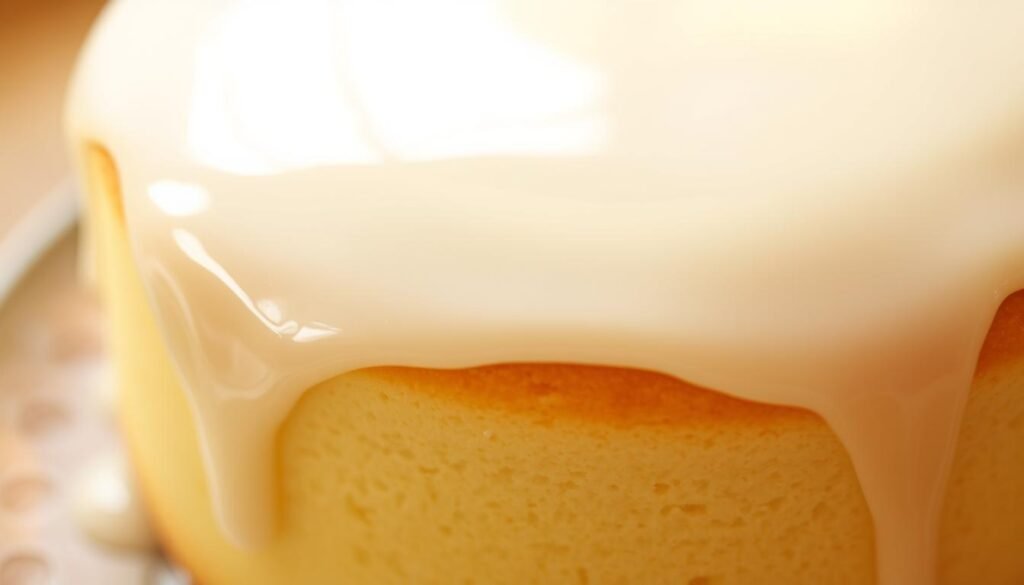
Mastering the classic sugar glaze lets you make stunning cakes. It’s perfect for both new and experienced bakers. With its simple yet elegant look, you can make amazing cakes for any event.
Creating the Perfect Chocolate Ganache Glaze
Chocolate ganache is a favorite among bakers for quick icing. It’s key to pick the right chocolate. I suggest 60% semisweet or dark chocolate for a smooth texture. High-quality couverture chocolate gives a glossy finish.
Getting the right consistency is important. Use 1:1 chocolate to cream for a thin glaze or 4:3 for thicker. For a standard glaze, mix 8 oz chocolate with 1 cup heavy cream. Heat the cream right and pour it over the chocolate for a glossy glaze. 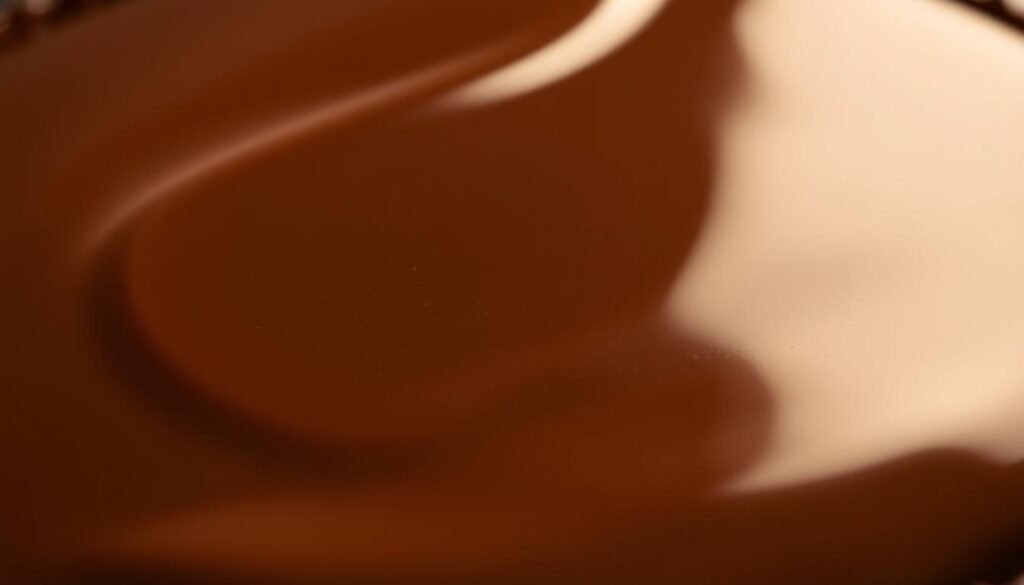
Choosing the Right Chocolate
The chocolate type greatly affects the ganache. Dark and semi-sweet are best for their cocoa content. When icing cakes quickly, think about the flavor and texture you want. Try different chocolates to find the best mix.
Temperature Control Tips
Temperature is key when working with chocolate ganache. Aim for 105°F to 115°F when melting. This ensures a smooth finish. Avoid overheating to prevent seizing or thinning.
Troubleshooting Common Ganache Issues
Seizing or a too-thin consistency are common problems. Understanding the causes helps fix these issues. Quick icing methods and beginner-friendly techniques can help you achieve a perfect glaze.
Citrus Glaze Variations and Applications
Citrus glazes are a tasty twist on traditional glazes. They’re easy to make by swapping citrus juice for water in a sugar glaze recipe. For instance, a lemon glaze can be made with 1 cup of powdered sugar, 2-3 tablespoons of heavy cream, and 1 tablespoon of lemon juice.
To create a citrus glaze, you’ll need:
- 1 tablespoon of butter
- 1 cup of powdered sugar
- 2-3 tablespoons of heavy cream
- 1 tablespoon of citrus zest (from about 1 large citrus fruit)
- 1 tablespoon of citrus juice (from about 1 large citrus fruit)
- ¼ teaspoon of vanilla extract
Making the citrus glaze takes about 5 minutes. It makes about 1 cup of glaze. You can keep it in the fridge for up to 1 week. Use it to top cakes, cupcakes, pancakes, and waffles. Here’s what you get per serving:
| Nutrient | Amount |
|---|---|
| Calories | 904 kcal |
| Carbohydrates | 164 g |
| Protein | 1 g |
| Fat | 30 g |
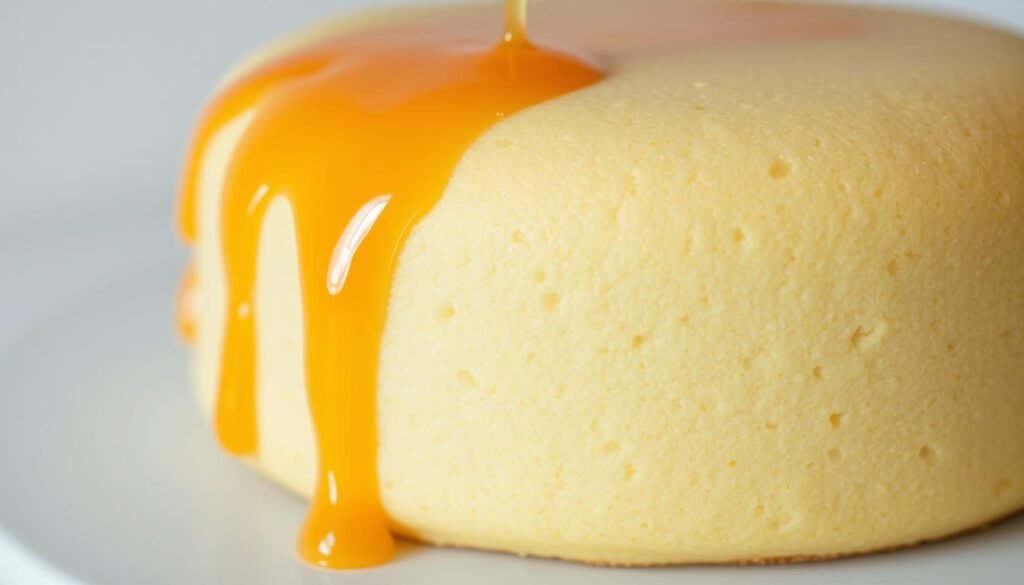
Citrus glazes bring flavor and moisture to your baked goods. They’re perfect for easy cake glaze recipes and minimalist cake decorating ideas. Their versatility makes them a valuable tool for any baker.
Maple Glaze Secrets and Techniques
Maple glaze is a great choice for adding elegance to your baked goods. It has a rich, velvety texture and a unique flavor. To make the perfect maple glaze, follow some basic tutorials and frosting tricks. Choosing high-quality maple syrup is key for a deep, rich flavor.
Getting the right consistency is important. A good starting point is 120g of powdered sugar to 1 tablespoon of maple syrup. But you can adjust this to get the glaze just right. For a thinner glaze, add a bit of milk or heavy cream. For thicker, add more powdered sugar.
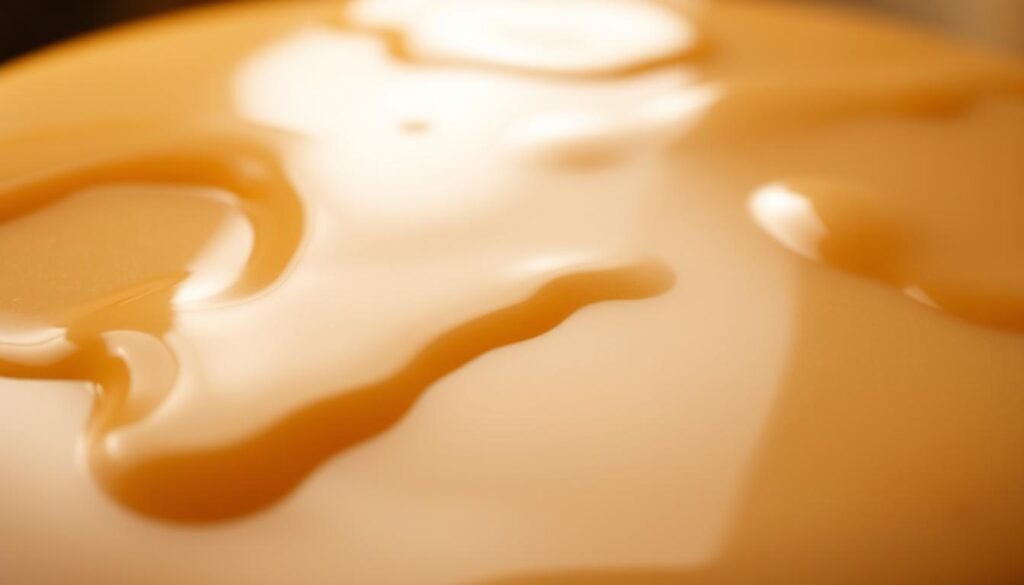
Remember to use a good maple extract for extra flavor. Also, a pinch of salt helps balance the sweetness. With these tips, you can make a beautiful maple glaze for cakes, donuts, and more. Soon, you’ll be a pro at making maple glaze, and your baking skills will improve.
Essential Equipment for Glaze Success
Creating a simple icing for cakes needs the right tools. But, you don’t have to spend a lot or get complicated. With basic tools, you can make a smooth glaze that makes your cakes stand out.
To make a minimalistic dessert glaze, you’ll need a whisk, a bowl, and a spatula. These tools make mixing and applying the glaze easy. You’ll get a professional look. You can also use silicone spatulas and glaze brushes to make things easier.
Other key tools for glaze success include:
- A double boiler or a heatproof bowl over simmering water
- A thermometer for the perfect temperature
- A parchment-lined surface for easy cleanup
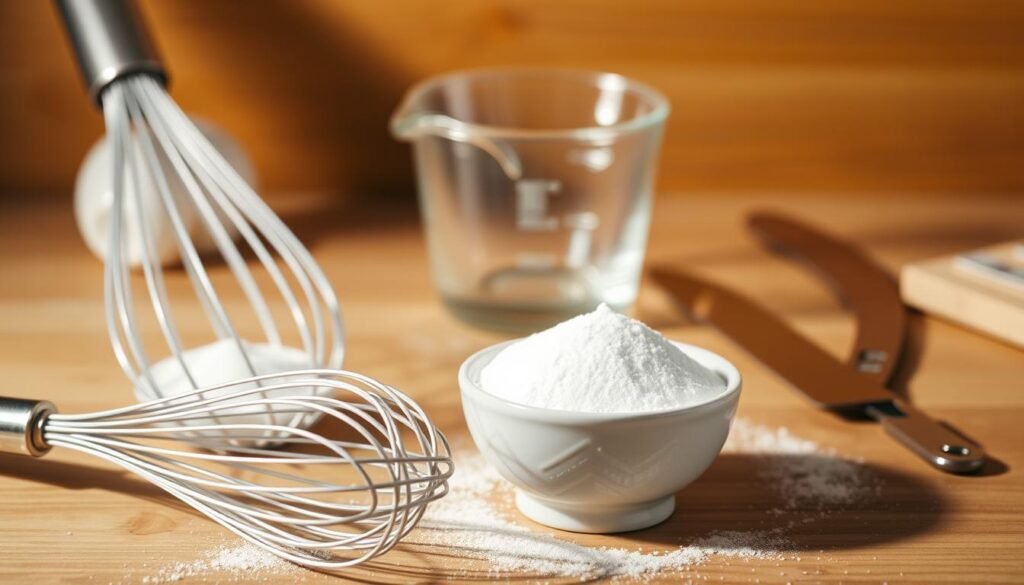
With these basic tools and accessories, you’re ready to make stunning cakes. A minimalistic dessert glaze will impress everyone. The secret is having the right tools and using them with confidence and practice.
Proper Glaze Temperature Guidelines
Working with glazes requires careful temperature control, which is key for beginners. To get a smooth finish, knowing the right temperature for each glaze is vital. For example, mirror glaze works best between 90°F to 94°F. Pouring it at 94°F gives the best results.
As a beginner, mastering quick cake icing methods and beginner-friendly cake topping techniques is essential. You need to know how to check the glaze and cake temperatures. This helps you adjust if the temperature is off. Following these tips will help you get a shiny, reflective glaze for your cake.
Here are some important temperature guidelines to remember:
- Working temperature for mirror glaze: 90°F to 94°F
- Recommended pouring temperature: 94°F
- Time for glaze to sit and cool before pouring: approximately 5 minutes
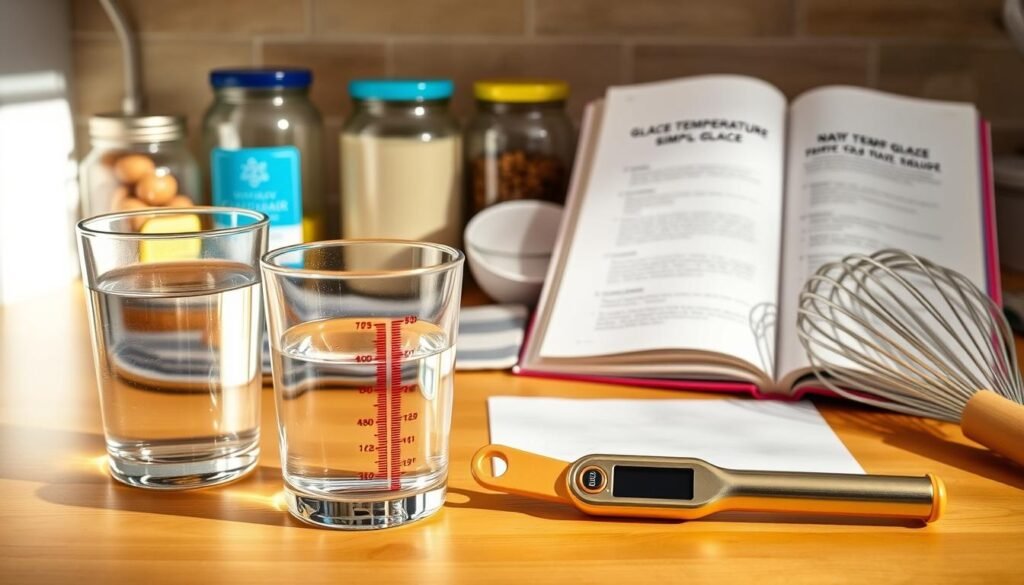
Controlling the glaze temperature ensures a smooth application. This is critical when using quick cake icing methods and beginner-friendly cake topping techniques. Always check the glaze and cake temperatures before applying. Adjust as needed for the perfect finish.
Common Glazing Mistakes to Avoid
Creating perfect glazes is all about avoiding common mistakes. Understanding timing, consistency, and application is key. This will help you make cakes that impress everyone.
For instance, if your glaze is too thick, add a bit of liquid or powdered sugar. A thin glaze should be like heavy cream, a medium like softly whipped cream, and a thick like buttercream. Getting these details right ensures your glazes look great on your cakes.
Timing is also important. Heated glazes need time to cool before use. A cold cake will make the glaze set faster, so adjust the consistency. With practice, you’ll get the hang of glazing and make beautiful cakes with easy cake glaze recipes and minimalist cake decorating ideas.
